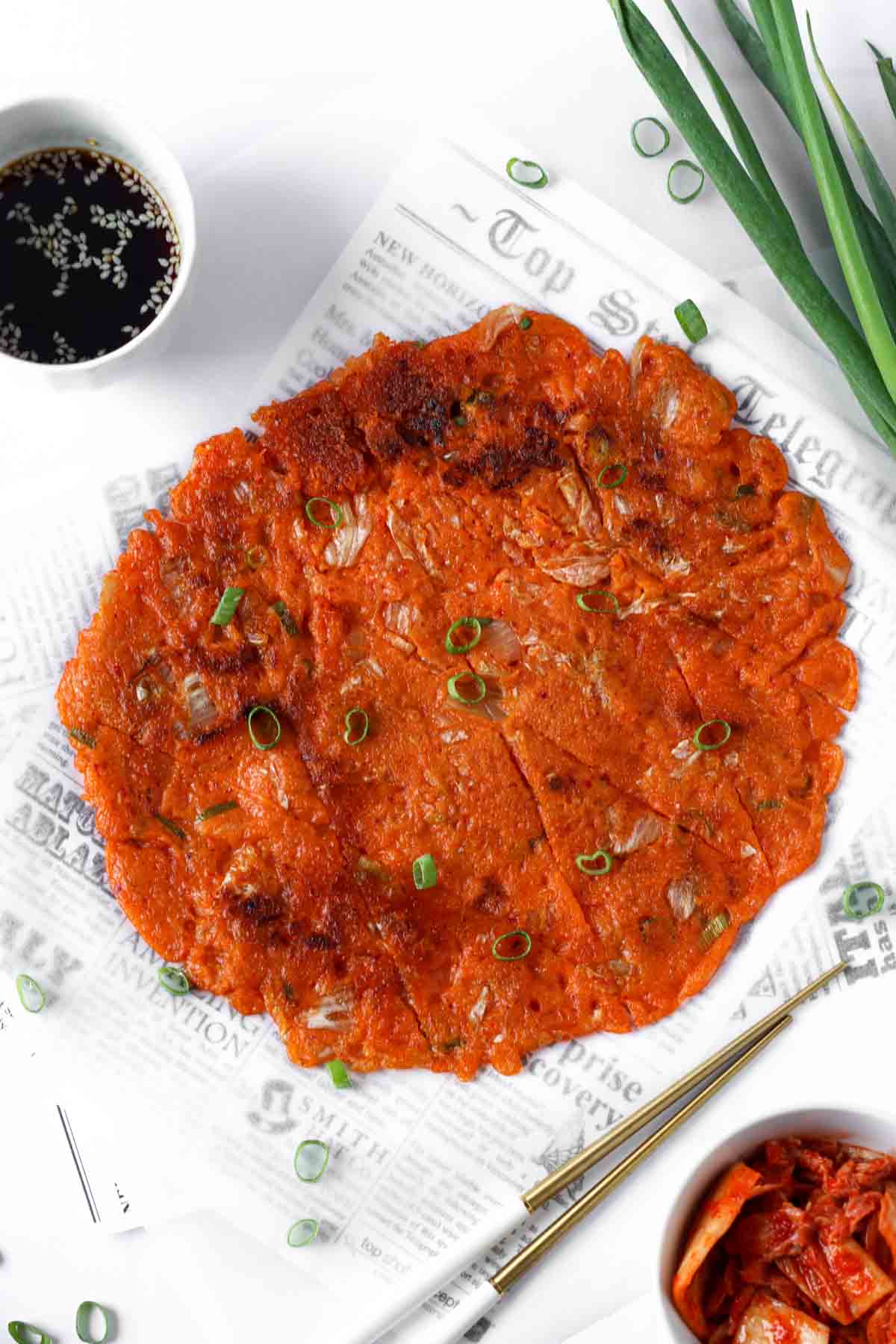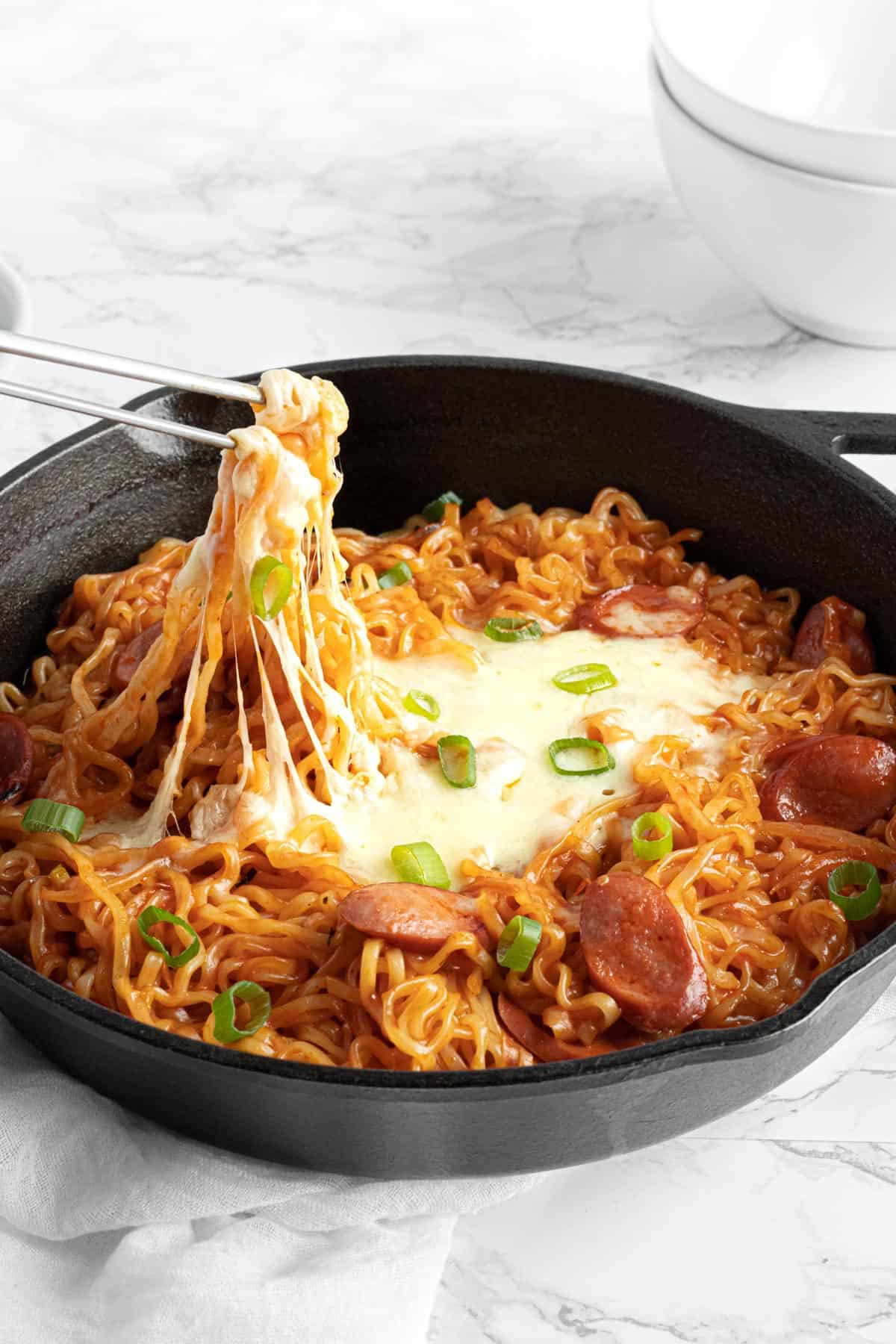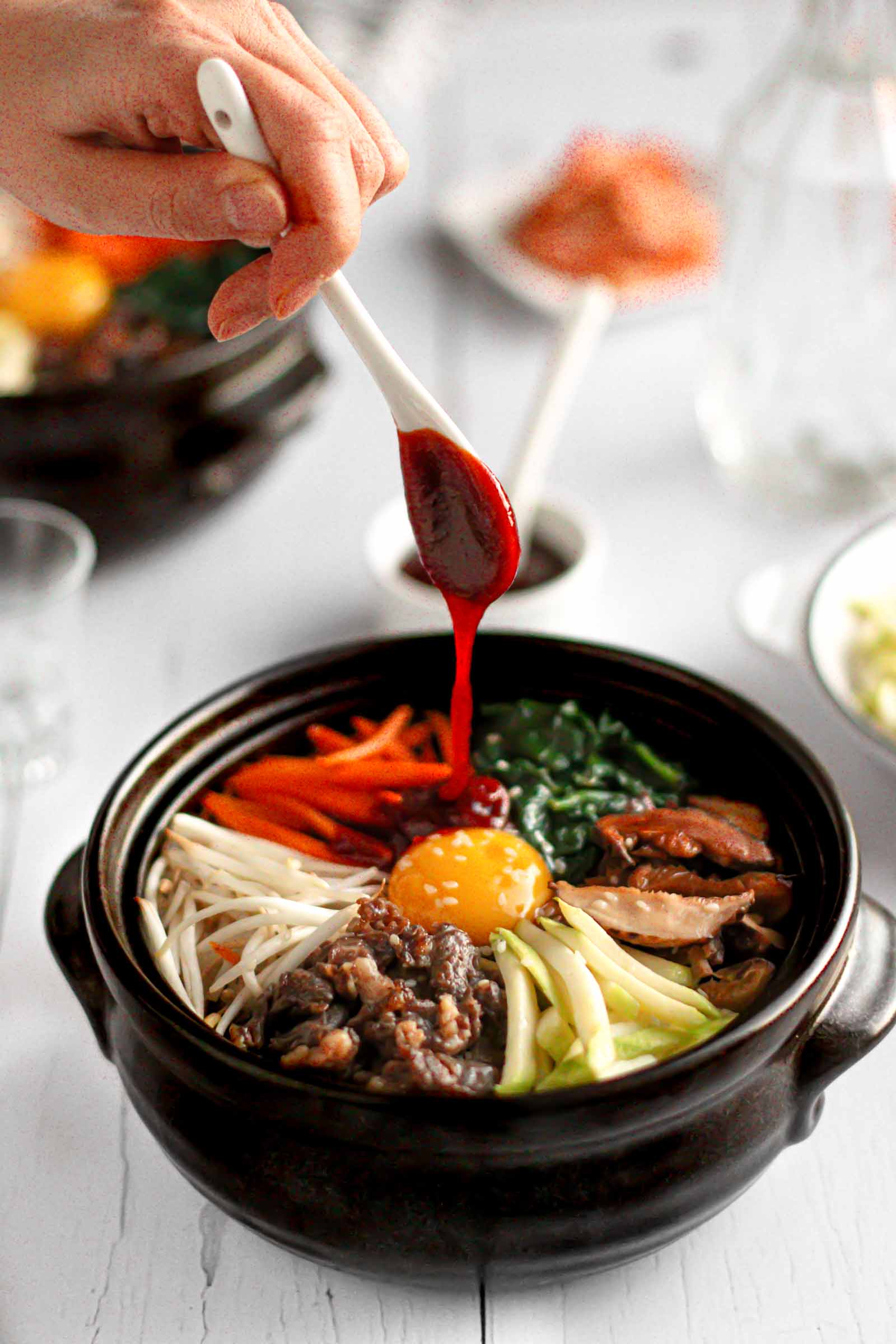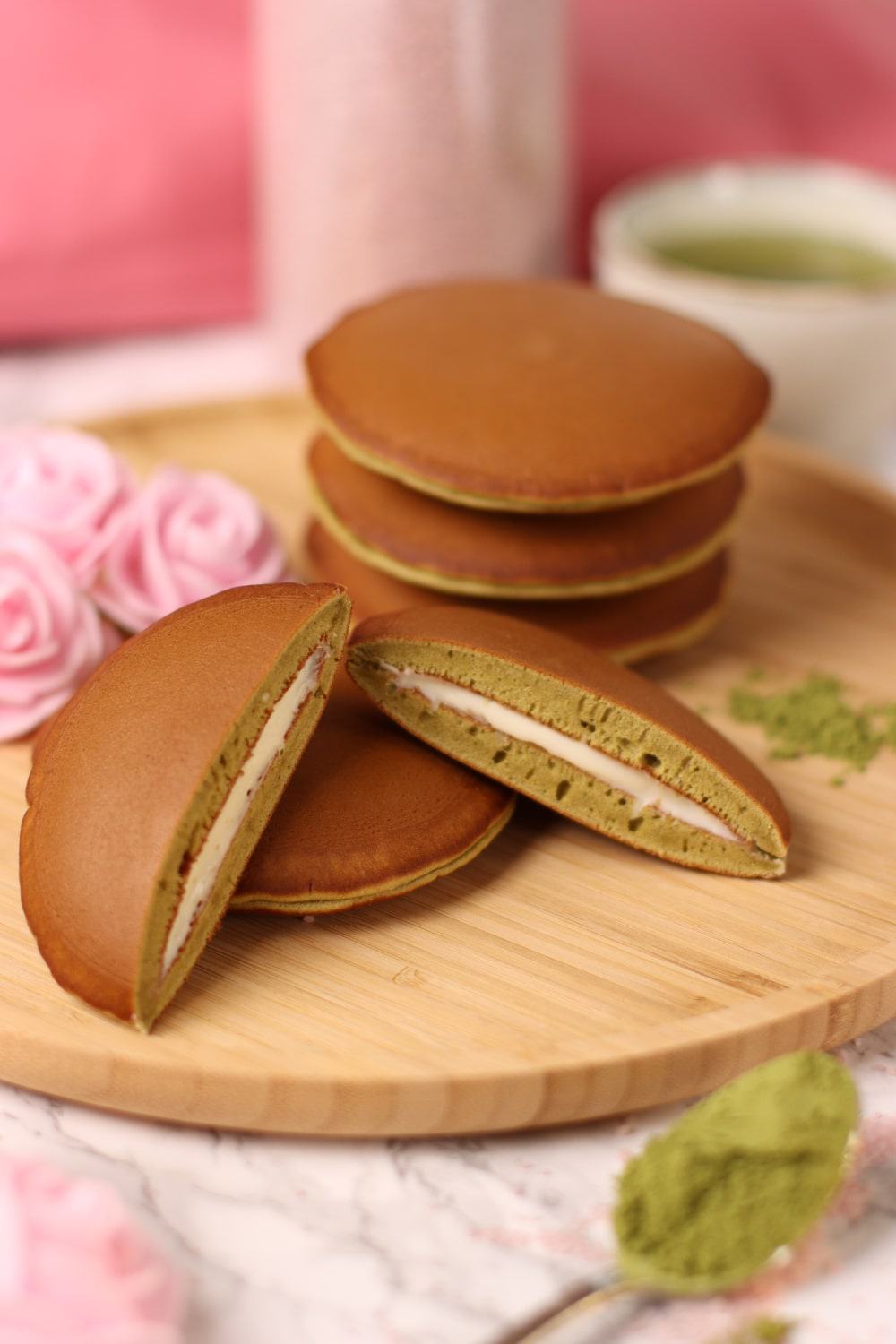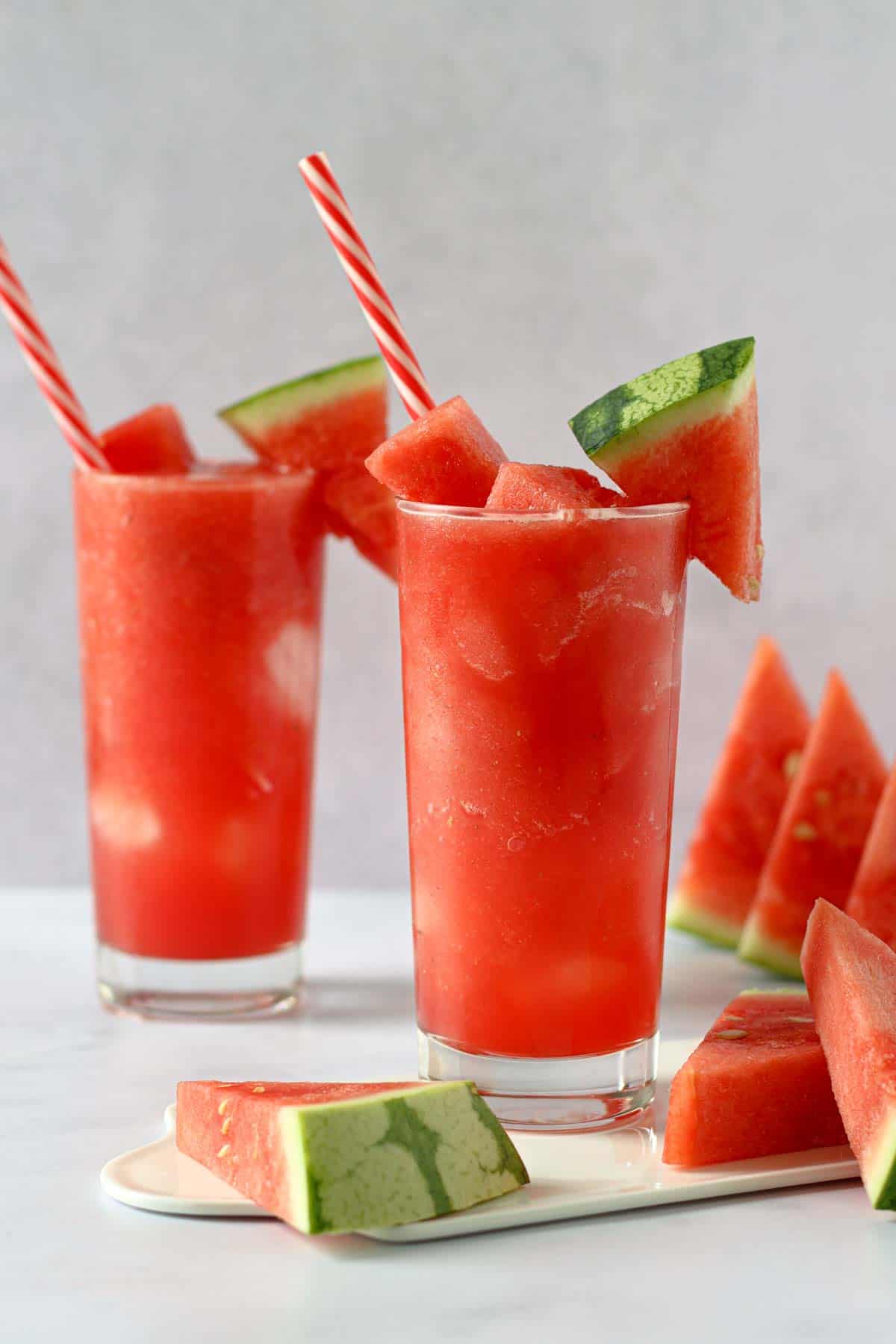Korean Rice Balls with Tuna Mayo (Jumeokbap)
This post may contain affiliate links. Please read my disclosure policy for details.
Korean rice balls, aka jumeokbap, are incredibly easy to make and require just a few ingredients. In this recipe, they’re filled with a tuna mayo mixture and coated with furikake. They’re perfect as a snack or as part of a meal.
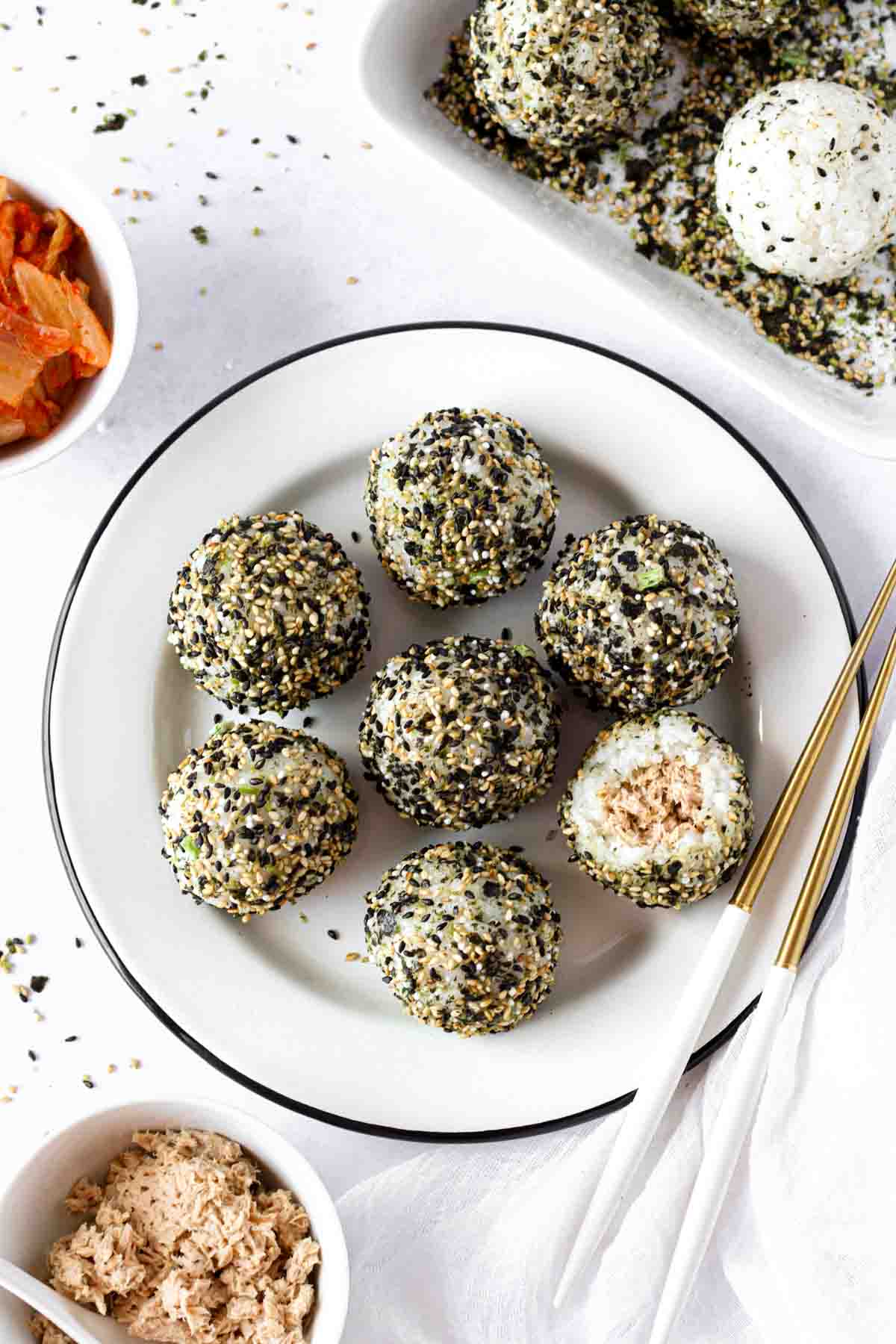
Making jumeokbap is a piece of cake – seriously, it’s one of the easiest Korean snacks ever (even your kids can make them)! Perfect for a quick on-the-go munch or a delightful picnic treat. It’s like a round version of onigiri or samgak kimbap (those cute triangle kimbaps), just smaller!
Now, these tuna mayo jumeokbap are a bit of an upgrade. Normally, we mix all the ingredients together and shape them into balls, but here we’re adding a tasty filling inside for that extra yum factor!
What is Jumeokbap?
Jumeokbap (주먹밥) also called “fist rice,” got its name because, well, it looks like little rice fists! Picture squishing rice with your hands into these cute, round balls that resemble a fist.
The other day, I had tuna jumeokbap at a restaurant in Hongdae, Seoul (check out the photo below). My friend and I ordered a variety of dishes, including jumeokbap. It’s typically served in a large bowl where the rice is topped with various ingredients, allowing you to create the rice balls yourself!

While the basic version uses plain rice, jumeokbap can be made more flavorful by adding various ingredients during the shaping process. Common additions include seasoned vegetables, minced meat, or other savory fillings.
WHY YOU’LL LOVE THIS RECIPE
Ingredients
rice
- sticky short-grain rice – either use Japanese sushi rice or Korean short-grain rice, both known for their stickiness. Other rice varieties won’t quite cut it for jumeokbap, as they won’t hold their shape well.
- sesame oil – use sesame oil to season the rice.
- furikake – in Korea, we typically use salted seaweed (kim), crushed for the seasoning. However if you have furikake at home, it’s also perfect! Furikake is a mix of pre-crushed seaweed and sometimes sesame seeds, giving that lovely umami touch to your jumeokbap.
tuna filling
- canned tuna – you can use either tuna in oil or tuna in water, but tuna in oil will yield a less dry filling. Make sure to drain the tuna well to avoid excess liquid and moisture in the filling.
- mayonnaise
- salt
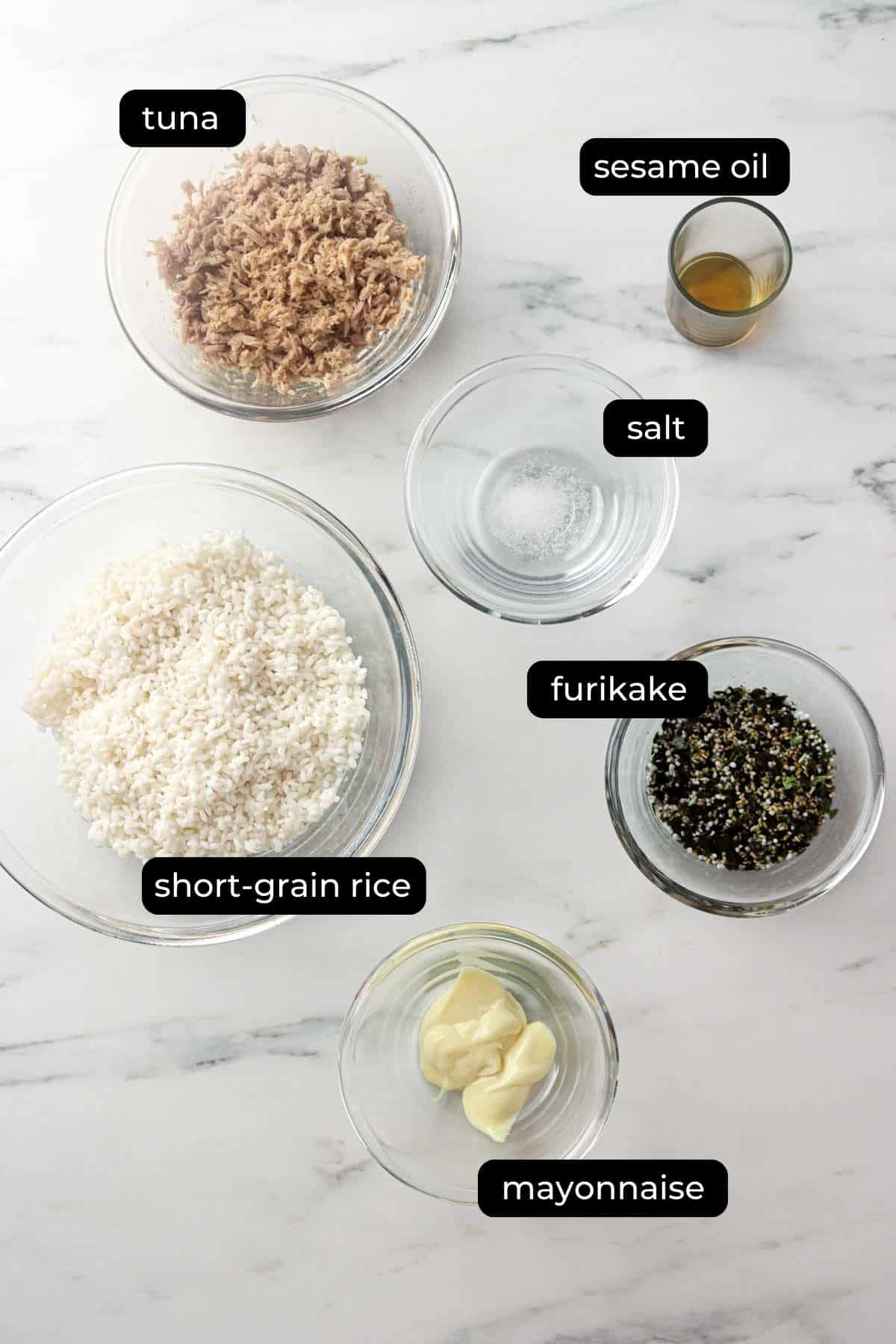
How To Make Jumeokbap?
- Prepare the filling – In a bowl, mix all filling ingredients together. Set aside.
- Cook the rice – rinse the sushi rice thoroughly under cold water until the water runs clear.
- (Optional) Soak the rice in water for at least 1 hour or up to 12 hours.
- Drain and discard the soaking water.
Soaking the rice allows it to absorb moisture. Therefore, once cooked, your rice will have a moist and soft texture – just PERFECT for these little rice balls.
- Cook the rice in your rice cooker as per usual. For 2 ‘rice cooker’ cups of rice, use 2 ½ cups of water – rice:water ratio should be 1:1¼.
- Once cooked, transfer the rice to a bowl and let it cool until it’s easy to handle.
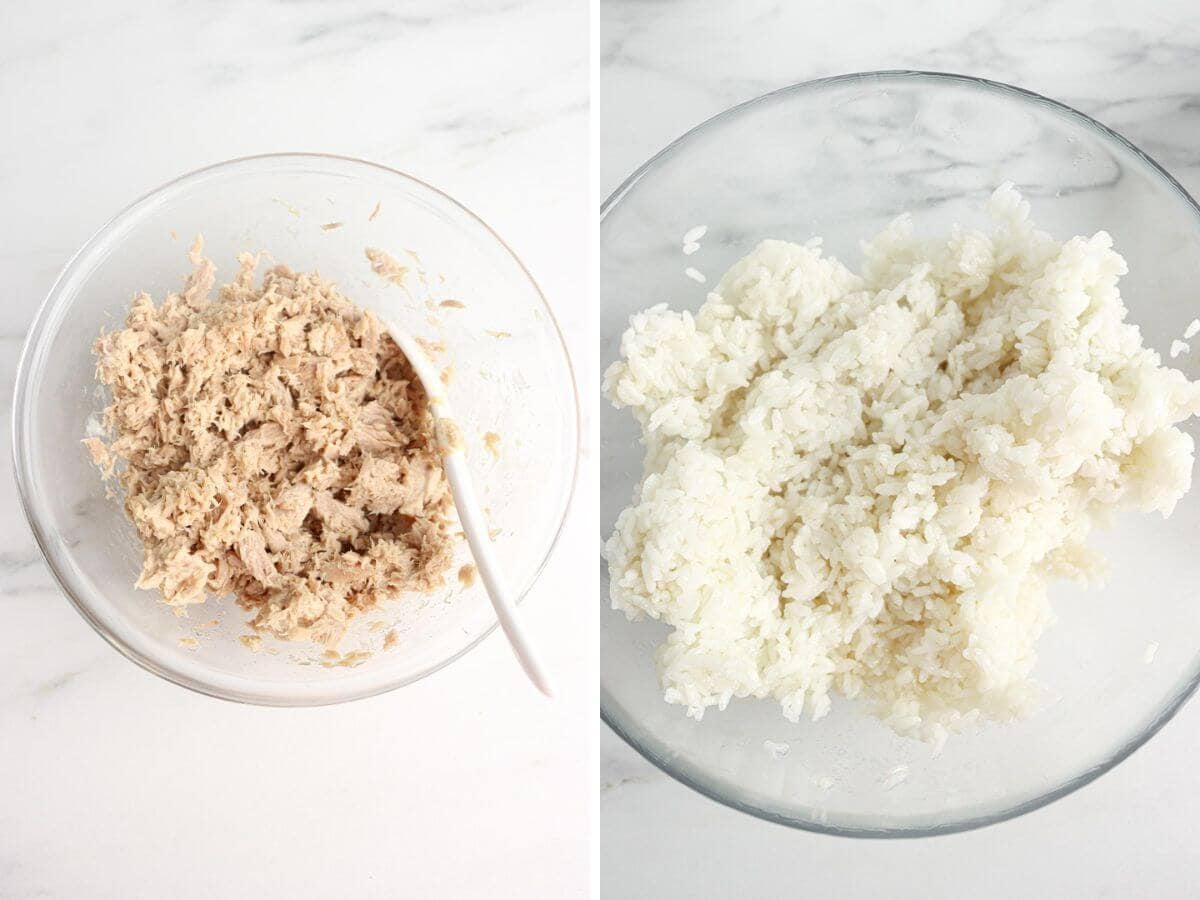
- Assemble – Put on plastic gloves to prevent the rice from sticking to your hands. Grab about 2 tablespoons of rice and shape it into a ball. Flatten the rice ball in the palm of your hand and place about 2 teaspoons of tuna filling in the center. Wrap the rice around the filling, adding more rice on top if needed to seal it completely. Shape it into a ball and press to ensure it holds together.
- Place some furikake in a bowl. Roll each rice ball in the furikake to cover the whole surface.
- Serve – Serve at room temperature and enjoy as a snack or part of a meal.
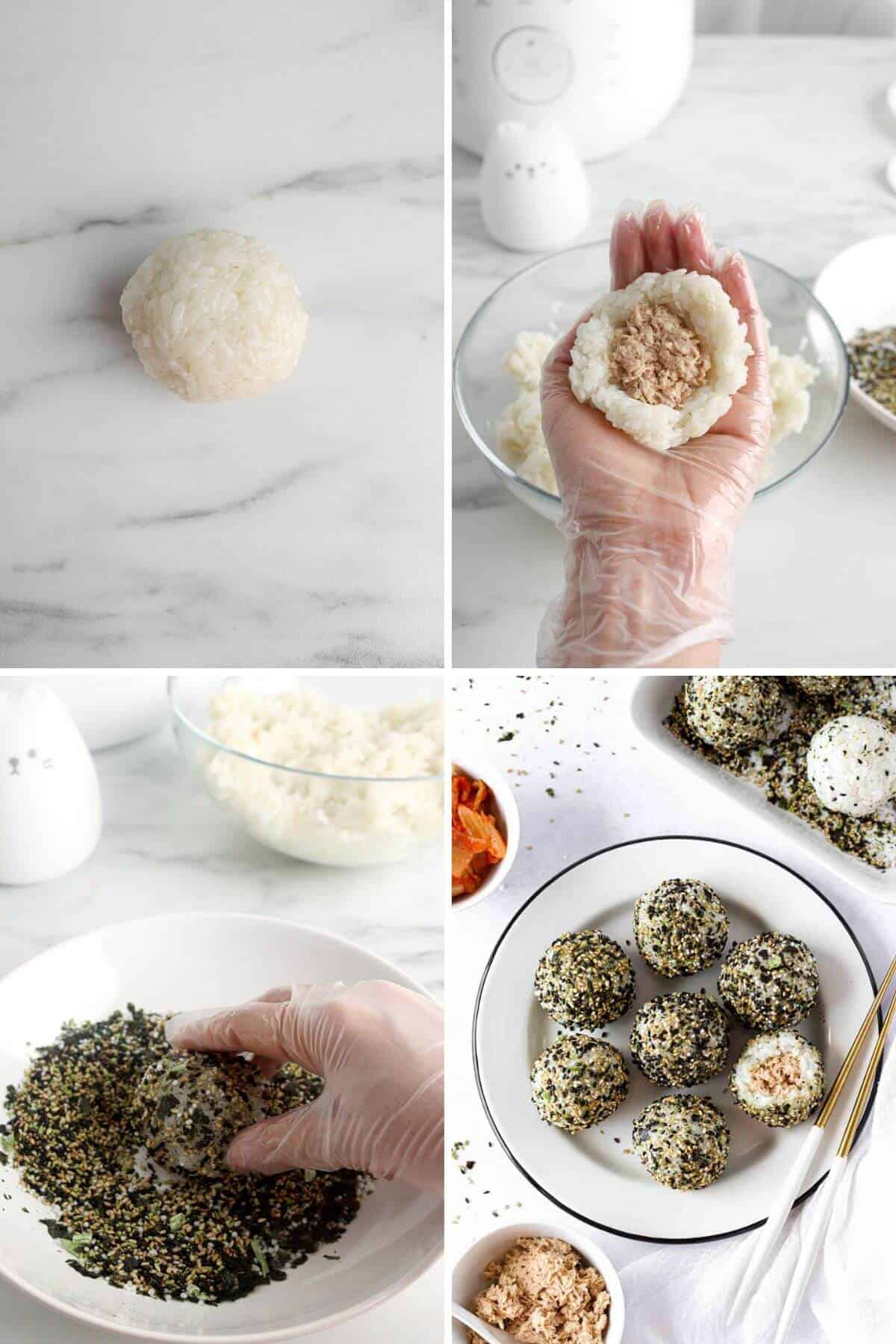
Variations
- Bulgogi jumeokbap – Fill the jumeokbap with bulgogi. If you follow my bulgogi recipe, you’ll need about 1/3 of the recipe. You’ll also need to chop the bulgogi into smaller pieces to fit it into the rice balls.
- Kimchi jumeokbap – Add finely chopped kimchi to your rice ball mixture for a spicy and tangy flavor.
- Salmon jumeokbap – Instead of using canned tuna, go for canned salmon and mix it with mayonnaise.
- Traditional jumeokbap – Mix any ingredients you like with rice and shape some rice balls without filling them.
What to serve with jumeokbap?
Enjoy jumeokbap on its own as a snack or include them in a meal with some other side dishes!
Classic accompaniments include kimchi, pickled vegetables, and tasty tofu treats like marinated tofu or spicy tofu. And for that cozy, comforting element, don’t forget doejang jjigae. Additionally, crispy Korean pancakes (jeon) bring diverse textures to the table, while seaweed soup (miyeok guk) just wraps you in this warm and cozy feeling.
How To Store and Reheat?
Make jumeokbap fresh on the day you plan to enjoy them. Refrigerating jumeokbap causes the rice to harden and lose its moisture, just like how leftover sushi rice can become dry and tough when refrigerated. Have you ever tried that after a sushi feast?
However if you don’t mind the texture change, you can store them in the refrigerator for up to 2 days. Just be aware that the rice won’t be as soft and moist. When you’re ready to enjoy them, simply reheat them in the microwave on high for 30 seconds to 1 minute, just enough to warm them up, not make them hot.
As for freezing, it’s not recommended. Freezing will significantly alter the soft texture of the rice.
Emma’s Tips
- Soak the rice – This optional step, advised by a close friend who is a head chef, significantly enhances the rice’s texture. Soaking allows the rice to absorb moisture, resulting in a softer texture, perfect for jumeokbap.
- Firm and gentle pressure – When shaping the rice balls, apply firm but gentle pressure. Too much pressure can make them dense and hard, while too little pressure can cause them to fall apart.
- Use the same amount of rice – For consistency in size and shape, ensure you use the same amount of rice for each jumeokbap.
- Don’t refrigerate if possible – As mentioned in the section above, refrigerating jumeokbap will cause the rice to harden and dry out.
- Serve at room temperature – If you’ve refrigerated the jumeokbap, allow them to come to room temperature before serving. Cold rice balls won’t have the same delightful texture and taste.
RECIPE FAQ
More on-the-go Korean snacks
- Korean Corn Dogs
- Korean Cheese Potato Pancakes
- Spicy Tuna Yaki Onigiri with Kimchi
- Bungeoppang (Korean Fish-Shaped Pastry)
RECIPES IN YOUR INBOX? Don’t forget to subscribe to my newsletter to receive the latest recipe updates delivered for free directly to your inbox! Oh, and you will also find me on Youtube, Instagram, Facebook and TikTok. Come say hi and leave me a message, it’s always a pleasure to connect with all of you!
Thanks so much for stopping by! xx


Korean Rice Balls with Tuna Mayo (Jumeokbap)
Equipment
- plastic gloves
Ingredients
rice
- 2 rice cooker cups uncooked sticky short-grain rice (Note 1)
- 1 tsp sesame oil
- ⅓ cup furikake | Japanese rice seasoning (Note 2)
tuna filling
- 150 g canned tuna , drained (Note 3)
- 30 g mayonnaise
- a pinch of salt
Instructions
- Prepare the filling – In a bowl, mix all filling ingredients together. Set aside.
- Cook the rice – rinse the sushi rice thoroughly under cold water until the water runs clear.
- (Optional) Soak the rice in water for at least 1 hour or up to 12 hours. Soaking will result in softer rice, perfect for jumeokbap.
- Drain and discard the soaking water.
- Cook the rice in your rice cooker as per usual. For 2 ‘rice cooker’ cups of rice, use 2 ½ cups of water – rice:water ratio should be 1:1¼ (Note 4).
- Once cooked, transfer the rice to a bowl and let it cool until it’s easy to handle.
- Assemble – Put on plastic gloves to prevent the rice from sticking to your hands. Grab about 2 tablespoons of rice and shape it into a ball. Flatten the rice ball in the palm of your hand and place about 2 teaspoons of tuna filling in the center. Wrap the rice around the filling, adding more rice on top if needed to seal it completely. Shape it into a ball and press to ensure it holds together.
- Place some furikake in a bowl. Roll each rice ball in the furikake to cover the whole surface.
- Serve – Serve at room temperature and enjoy as a snack or part of a meal.

